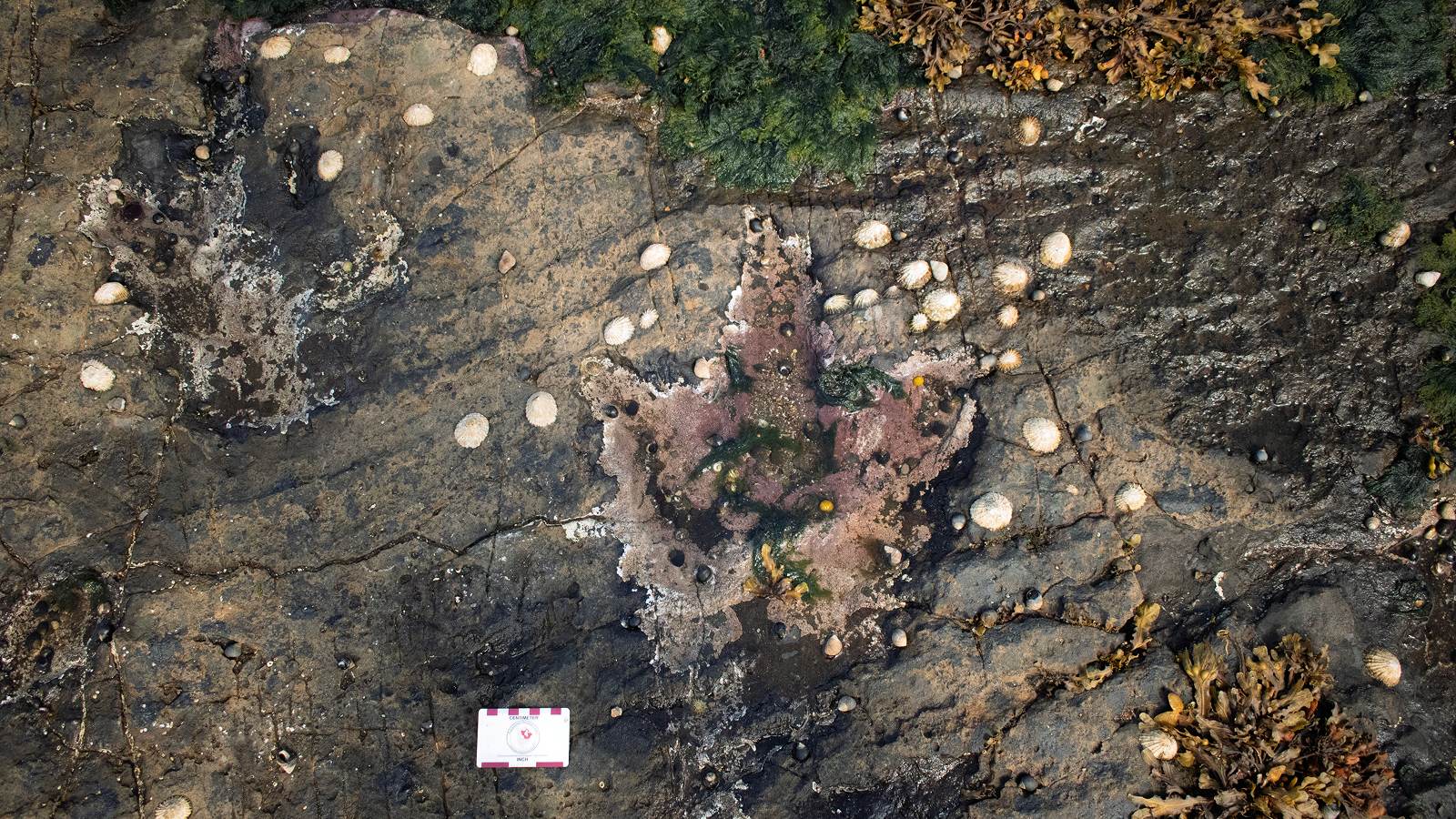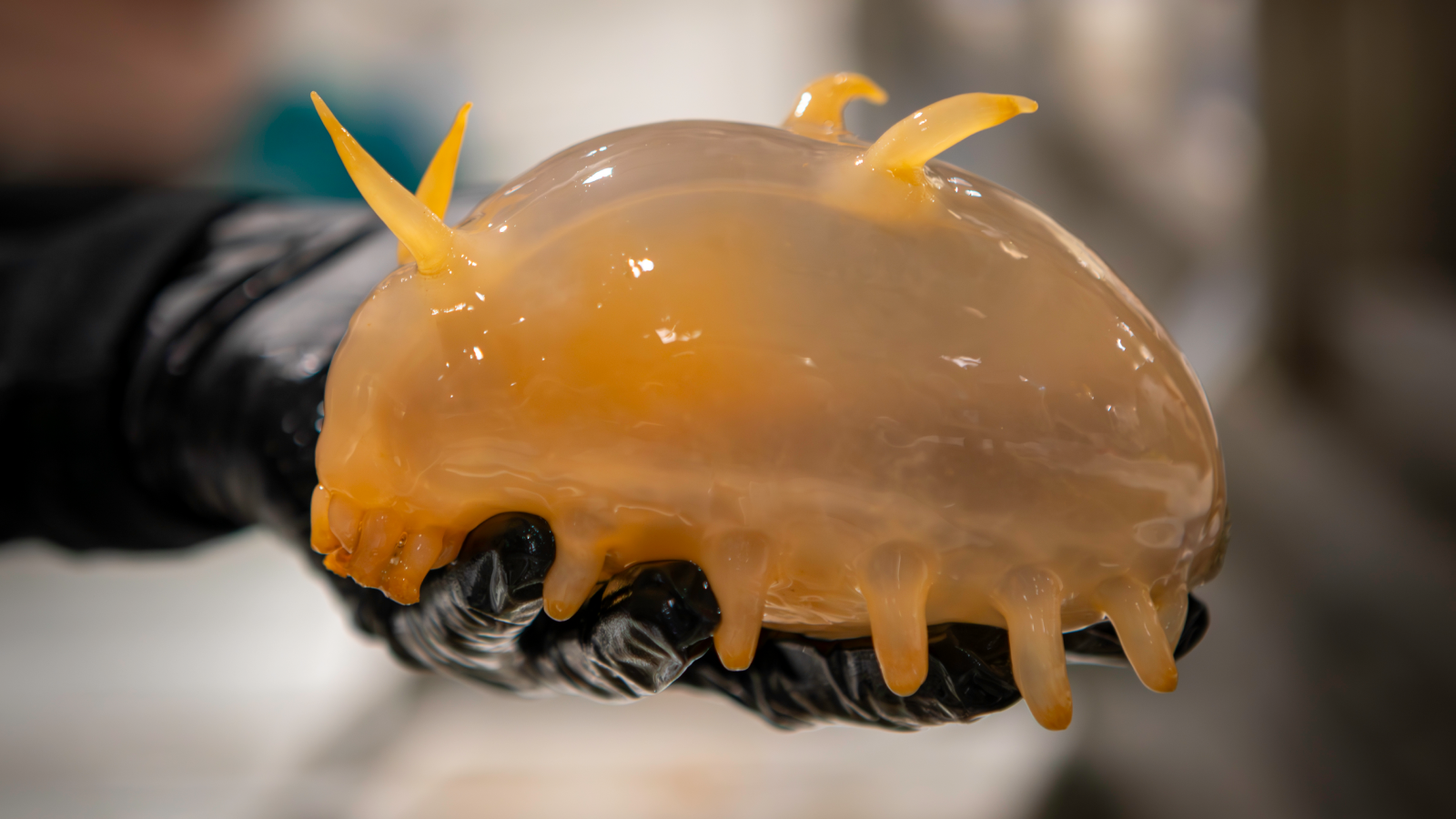Electric eels can supercharge their attacks by working together
Their shock can be 10 times more powerful as a group.
Stunning new video footage captures electric eels in the Amazon hunting in groups of more than 100. Deadly packs then splinter off to collectively deliver a supercharged jolt that blasts fish out of the water, a new study finds.
This is the first time such group hunting has been seen in Volta's electric eels (Electrophorus voltai), a type of knifefish already known for individually producing the strongest electric shock of any animal.
The video footage, which was described Jan. 14 in the journal Ecology and Evolution, was captured at a small lake on the banks of the Iriri River in Brazil. "It's really amazing to find a behavior like that with eels that are 2.4, 2.5 meters [around 8 feet] long," David de Santana, a zoologist at the Smithsonian National Museum of Natural History in Washington, D.C., and co-author of the new study, told Live Science.
Related: Amazing arapaima: Photos of the Amazon's biggest fish
Mammals routinely work together to catch prey, but such behavior is comparatively rare in fish, according to the new study. Prior to this discovery, scientists thought electric eels were solitary predators, usually attacking a single fish at a time.
The newly documented group hunting method, involves up to 100 electric eels encircling shoals of small tetra fish to form a "prey ball," then herding them toward shallower waters. Then, some eels (between two and 10 individuals) splinter off from the main group and move closer to the ball to deliver a supercharged jolt of electricity.
The synchronized shock is so powerful that some of the shoaling fish are blasted out of the water and land back on the surface stunned. They then float motionless, becoming an easy catch for the predatory eels.
Sign up for the Live Science daily newsletter now
Get the world’s most fascinating discoveries delivered straight to your inbox.
"One individual eel of this species can produce a high-voltage discharge of 860 volts. So, in theory, 10 electric eels can produce 8,600. So that's a lot," de Santana said. He has been shocked multiple times during his fish studies and said the sensation is strong enough to cause "numbness" in his arms. "It's a really strong discharge, however the duration's really short," de Santana said.
But de Santana has only ever been shocked by one eel at a time. With the potential of being zapped by up to 10 at once, he recommends staying out of the water if you happen to come across a large group.
The first observation of this behavior was "kind of an accident," de Santana said. His colleague, study lead author Douglas Bastos, a zoologist at the National Institute for Amazonian Research (INPA) in Brazil, was in the region in 2012 to survey fish when he came across a congregation of electric eels and tetras being shocked out of the water. After capturing some initial footage, the researchers decided to return to the same location in 2014, where they captured 72 hours of footage. In it, they documented the behavior five more times.
The researchers suggest that hunting individually is probably less efficient when the eels encounter a group of prey that is alert to their presence. Working together helps the eels produce more powerful electric discharges that can shock the prey from a greater distance.
The team suspects that the behavior is not common and likely happens only when the conditions are right. "Our initial hypothesis is that this behavior really occurs in locations with high prey abundance and also with long-term shelter for multiple eels," de Santana said. That means lots of fish and plenty of nooks and crannies for the eels to live in. These conditions may only exist in the middle of the Amazon, he added.
Originally published on Live Science.

Patrick Pester is the trending news writer at Live Science. His work has appeared on other science websites, such as BBC Science Focus and Scientific American. Patrick retrained as a journalist after spending his early career working in zoos and wildlife conservation. He was awarded the Master's Excellence Scholarship to study at Cardiff University where he completed a master's degree in international journalism. He also has a second master's degree in biodiversity, evolution and conservation in action from Middlesex University London. When he isn't writing news, Patrick investigates the sale of human remains.









